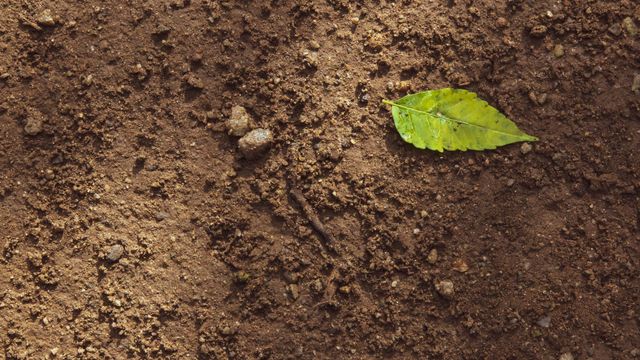Biomimetic MOF Membranes Spark Complex Protocells Formation

In the relentless pursuit to unravel the origins of life and replicate its fundamental processes, scientists have increasingly turned to the construction of artificial cells, or protocells, that mimic the complex behaviors of living organisms. Recent advances highlight the importance of developing bottom-up approaches capable of approximating the intricate structural and functional organization seen in natural cells. One of the most promising avenues in this endeavor involves the use of complex coacervate microdroplets—membraneless compartments formed through liquid-liquid phase separation—that emulate primordial cellular compartments. Yet, the challenge lies in overcoming limitations related to structural control and intercellular communication, as these membraneless coacervates struggle to fully replicate the intricate organizational hierarchy and membrane functionalities inherent to living cells.
A groundbreaking study led by researchers Ji, Lin, and Qiao introduces an innovative strategy to bridge this gap by engineering membrane-bound coacervate protocells through the interfacial assembly of metal–organic framework (MOF) nanoparticles. This pioneering approach hinges on the unique physicochemical properties of MOFs — highly porous, crystalline materials known for their tunable surface chemistries. By orchestrating the assembly of MOF nanoparticles around coacervate microdroplets at their interfaces, the team has successfully fabricated a novel class of membranized protocells that combine the dynamic compartmentalization of coacervates with the selective permeability and functional versatility of synthetic membranes.
What sets this achievement apart is the ability to harness the porous architecture intrinsic to MOFs, which not only allows for the controlled exchange of biomolecules across the membrane but also facilitates precise spatial organization within the protocell interior. This results in a biomimetic platform where integral and peripheral membrane proteins—conceptually mirrored by MOF-incorporated proteins—can be systematically integrated, effectively replicating key aspects of biological membrane complexity. This ingenious membrane design brings artificial protocells a step closer to mimicking natural cellular membranes, which are central to processes such as signaling, transport, and environmental responsiveness.
.adsslot_fjI5vq29eR{width:728px !important;height:90px !important;}
@media(max-width:1199px){ .adsslot_fjI5vq29eR{width:468px !important;height:60px !important;}
}
@media(max-width:767px){ .adsslot_fjI5vq29eR{width:320px !important;height:50px !important;}
}
ADVERTISEMENT
The implications of this development are multifold. By embedding proteins into the MOF-based membrane, the researchers have managed to engineer protocells that exhibit selective functionalization reminiscent of living systems. The artificial membranes do not merely serve as passive barriers; instead, they actively regulate the internal biochemical milieu and participate in transmembrane communication, emulating the interactive dynamics found in genuine cell membranes. This marks a significant leap in overcoming traditional limitations associated with coacervate-based protocells, which typically lack defined boundaries and the robust functional interfaces required for sophisticated cellular activities.
Beyond the construction of individual protocells, the research advances into the realm of protocell assemblies, pioneering the creation of artificial-organelle-incorporated protocells and tissue-like conglomerates. By embedding specialized functional units akin to organelles within the coacervate cores, the authors have designed protocells capable of compartmentalized biochemical processing and complex metabolic activities. These engineered systems showcase emergent behaviors such as signal processing and protocell-to-protocell communication—phenomena crucial for mimicking multicellular coordination and the primitive steps toward cellular collectives.
The ability to interconnect these protocells into structured prototissues represents an unprecedented stride in the artificial synthesis of living systems. Such tissue-like assemblies demonstrate cooperative functions and intercellular exchanges facilitated by the MOF membranes’ permeability and selective sorting of bioactive molecules. This capability opens pathways not only to study early evolutionary biology and cellular communication paradigms but also to develop biomimetic materials and synthetic tissues with programmable functionalities for biomedical and technological applications.
Technically, the interfacial self-assembly process employed here leverages the affinity of MOF nanoparticles for the coacervate interfaces. This method allows the formation of coherent, continuous membranes that encapsulate the coacervate phase, effectively bridging the gap between membraneless droplets and membrane-bound compartments. The MOF’s modular chemistry permits tuning of membrane thickness, pore size, and surface functionality, facilitating tailored membrane properties to accommodate specific biomolecular cargoes and catalytic entities.
Furthermore, the study explores how the surface chemistry of MOF constituents can be manipulated to recruit and stabilize proteins either embedded within or attached to the membrane surface. This biomimetic protein incorporation sheds light on how artificial protocells may emulate native membrane protein diversity, supporting dynamic interactions, selective permeability, and signal transduction—all hallmark features of living cell membranes. The artificial membranes hence function as active interfaces, enabling regulated molecular exchange and environmental responsiveness.
At the core of these findings lies the meticulous control over spatial biomolecular organization—a feat rarely achieved in bottom-up synthetic biology. The researchers demonstrate that MOF-membranized coacervates support hierarchical structuring, enabling spatial segregation of biochemical reactions analogous to compartmentalization in living cells. This spatial orchestration is pivotal for simulating metabolic pathways and information flow within artificial cells, paving the way toward constructing increasingly sophisticated cellular mimics.
Importantly, the robustness of the MOF membranes ensures enhanced stability of coacervate protocells under physiological conditions, overcoming the inherent instability challenges faced by membraneless droplets. This stability underpins the protocells’ potential utility in practical applications where controlled compartmentalization and interface integrity are critical, such as biosensing, drug delivery, and synthetic tissue engineering.
This research trajectory also aligns with evolving ideas about the origin of life, where compartmentalization and membrane formation were essential milestones. By providing a platform that combines both membraneless and membrane-bound features, the study offers experimental models to understand how primitive cells might have transitioned from simple phase-separated droplets to more complex entities with controlled permeability and interactive membranes.
The engineered protocells’ capacity for signal processing and inter-protocell communication heralds new possibilities for designing synthetic biological systems capable of decentralized decision-making and cooperative behaviors. These systems could be programmed to respond adaptively to environmental cues, exchange biochemical signals, and form dynamic assemblies, opening vistas for synthetic tissues with programmed morphogenesis and functional responsiveness.
From a materials science perspective, the integration of MOFs into biological mimics stands out as a versatile approach to design membranes with customizable mechanical and chemical properties. This modularity enables the fine-tuning of protocell interfaces for diverse applications, bridging synthetic chemistry, nanotechnology, and synthetic biology.
In conclusion, the interfacial assembly of biomimetic MOF-based porous membranes on coacervate microdroplets transcends the boundaries between membraneless droplets and traditional lipid vesicles, ushering in a new class of artificial protocells with membrane functionalities reminiscent of living cells. Through this innovative platform, the assembly of complex protocells and prototissues is no longer a distant prospect but an increasingly tangible reality. This work charts a promising course toward materializing artificial life-like systems, fostering deeper insights into cellular organization, communication, and evolution, and propelling synthetic biology into exciting new territories.
As this technology matures, the possibilities for creating customizable, functional tissues and hierarchical cellular constructs multiply, potentially revolutionizing regenerative medicine, biotechnology, and the fundamental understanding of life’s origins. The convergence of coacervate chemistry, metal-organic framework engineering, and biomimetic protein integration exemplifies the interdisciplinary synergy driving contemporary breakthroughs in artificial cell research. This approach not only sets a new benchmark for protocell construction but also inspires future innovations geared toward building life-inspired, functional materials that operate at the interface of chemistry, biology, and materials science.
Subject of Research: Bottom-up construction of membrane-bound coacervate protocells using metal-organic framework nanoparticle membranes, enabling complex protocell and prototissue assembly.
Article Title: Interfacial assembly of biomimetic MOF-based porous membranes on coacervates to build complex protocells and prototissues.
Article References:
Ji, Y., Lin, Y. & Qiao, Y. Interfacial assembly of biomimetic MOF-based porous membranes on coacervates to build complex protocells and prototissues. Nat. Chem. (2025). https://doi.org/10.1038/s41557-025-01827-7
Image Credits: AI Generated
Tags: artificial cell designbiomimetic membranesbottom-up approaches in life sciencescomplex coacervate microdropletsengineered membrane-bound coacervatesintercellular communication in protocellsliquid-liquid phase separationmetal-organic frameworks in biologyphysicochemical properties of MOFsprimordial cellular compartmentsprotocell formation techniquesstructural control in synthetic biology



